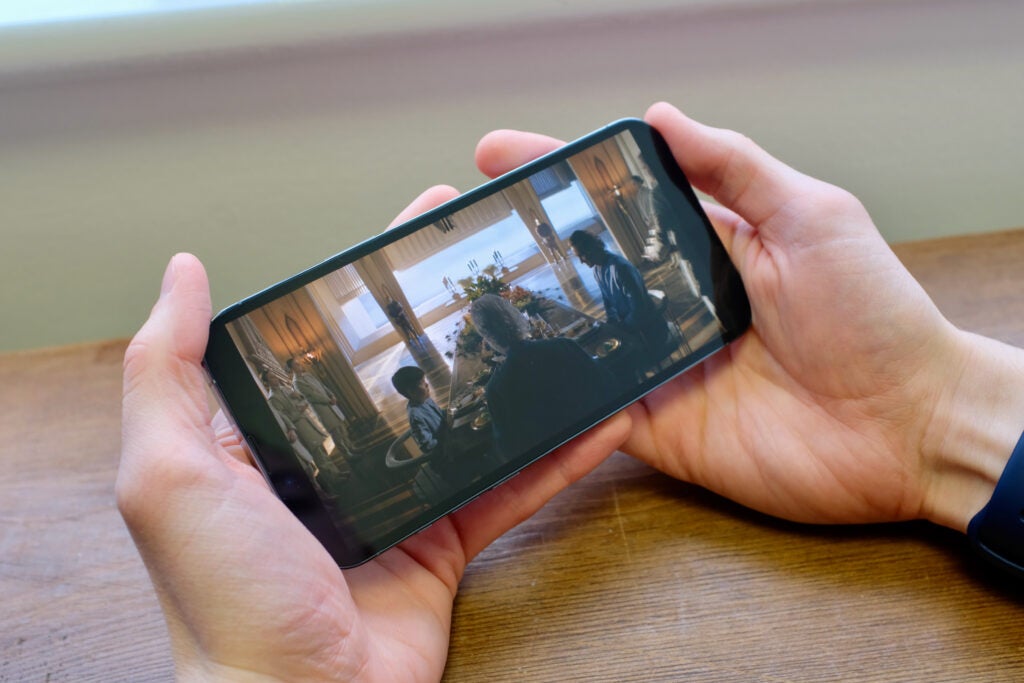OLED and LCD LED are two of the most common display types that can be found across monitors, TVs, mobile phones, cameras and each one has its advantages and disadvantages.
LED (light-emitting diode) is the most common type of display on the market. If you hear a TV labelled as LCD (liquid crystal display), that’s virtually the same as LED, the LED part refers to the lighting source and not the display itself.
OLED (organic light-emitting diode) is used in high-end flagship TVs as well as mobile devices such as smartphones and tablets.
Which one is better? It depends on what your needs are.
How do they differ?
LED LCD screens use a backlight to illuminate pixels, while OLED’s pixels produce their own light. OLED’s pixels are referred to as ‘self-emissive’, while LCD tech is ‘transmissive’.
The light of an OLED display can be controlled on a pixel-by-pixel basis. This sort of precision isn’t possible with an LED LCD.
In cheaper TVs and LCD-screen phones, LED LCD displays often use ‘edge lighting’, where LEDs are positioned towards the side of the display and not behind it. The light from these LEDs is fired through a matrix that feeds it through the red, green and blue pixels, making up the colours we see with our eyes.
Brightness


LED LCD screens can hit higher levels of brightness than OLED and maintain them. That’s a big deal in the TV world, but even more so for smartphones, which are often used outdoors and in bright sunlight. The above image is actually a Mini LED TV next to an OLED, but you get the idea in terms of their performance difference with regards to brightness.
Brightness is measured as ‘nits’ – roughly the light of a candle per square metre. Brightness is important when viewing content in ambient light or sunlight, but also for high dynamic range video. This applies more to TVs, but phones boast credible video performance. Brightness feeds into colour volume, offering a wide range of colours but brightness is only one part of the equation.
LED LCD wins
Contrast


The other part is contrast. View an LCD screen into a darkened room and you’ll notice that some parts that are meant to be black may look blu-ish. That’s because you can still see the backlighting showing through.
This ‘blooming’ which shows around bright objects on a screen affects a display’s contrast, which is the difference between the brightest and darkest parts of the image.
A contrast ratio tells you how much brighter a display’s whites are compared to its blacks. A decent LCD screen would have a contrast ratio of 1,000:1, which means the whites are a thousand times brighter than the blacks.
Contrast on an OLED display is referred to as ‘infinity’. When an OLED screen goes black, its pixels produce no light whatsoever. As OLED screens get brighter, this helps contrast and depth. In general, OLED screens are still best suited for use in darker rooms, but when it comes to contrast, no display has a greater effect than OLED.
OLED wins
Viewing Angles


OLED screens offer excellent viewing angles, primarily because the pixels are so close to the surface. You can sit at wide angles to an OLED TV and colours and contrast will remain strong. For phones, viewing angles are extra important because you don’t tend to hold your hand perfectly parallel to your face.
Viewing angles are generally worse in LCDs, but this varies depending on the display technology used.
The most basic is twisted nematic (TN), which is used in budget computer monitors, cheaper laptops, and very low-cost phones, and it offers poor viewing angles. If you’ve ever noticed that your computer screen looks all shadowy from a certain angle, it’s more than likely it uses a twisted nematic panel.
Most LCD devices use IPS panels, which stands for ‘in-plane switching’. It generally provides better colour performance and dramatically improved viewing angles. Nevertheless, when it comes to viewing angles, OLED rules.
OLED wins
Colour


The latest LCD screens can produce fantastic natural-looking colours. However, as is the case with viewing angles, it depends on the specific technology used.
IPS and VA (vertical alignment) screens offer great colour accuracy when properly calibrated, whilst TN screens can often look weak or washed-out.
OLED’s colours have fewer issues with pop and vibrancy, but where OLED can still struggle compared to LED is with colour volume. LCD LED screens can show a wider array of colours at different brightness levels, while OLEDs tend to offer richer, more saturated colours.
LED LCD wins
Which is better?
While LED LCD has been around for longer and is less expensive, manufacturers have moved away from it and focused Mini LED.
OLED is less expensive than it was a few years ago but is still viewed as a premium technology, though during a sale OLEDs TV often drop below the £1000 price point.
OLED is better than LED LCD at handling black levels and contrast as well as offering wider viewing angles. Refresh rates and motion processing are also better with OLED and while image retention can be an issue, it’s rarely a big problem these days thanks to the technology within OLED TVs.
Which is better? It comes down to what you need. No TV is perfect, but if you watch in a room with lots of ambient light, a bright LCD LED TV is better. OLED is better when the lights are down, and if viewing angles, precise black levels and motion and refresh rates (for sports and gaming) is what you’re after, it’s the better pick.
Regardless of which TV you go for, if you want the best then you’ll have to fork some money out.




